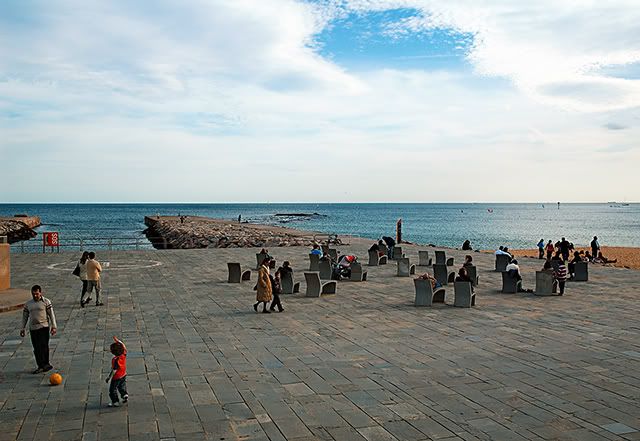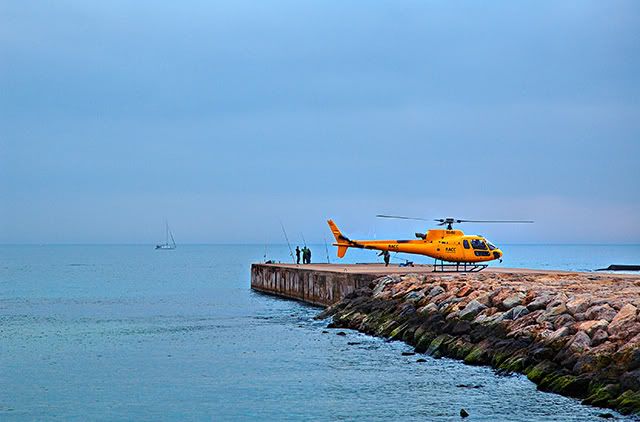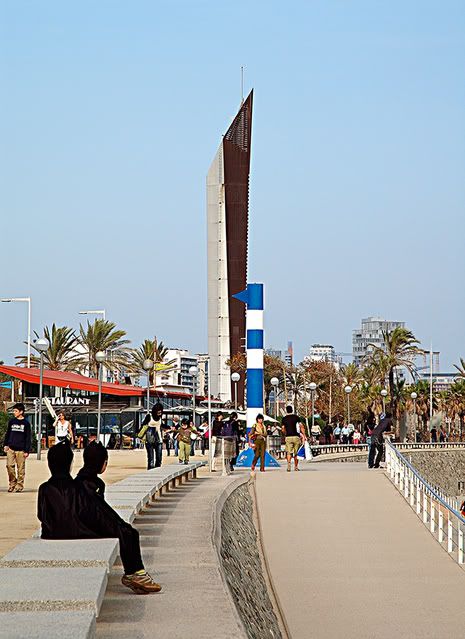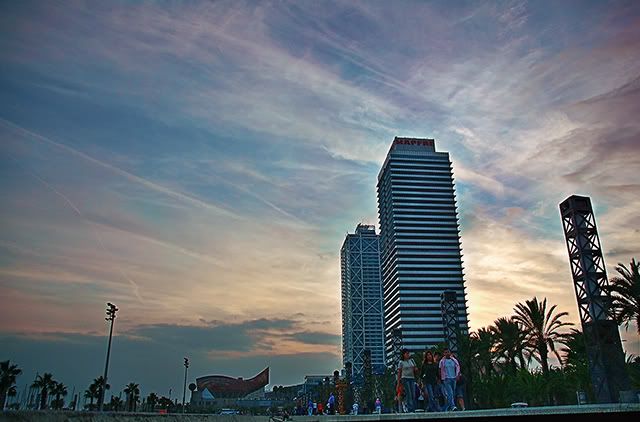
How odd can a post about Barcelona be? How can you relate every single image
you capture on those streets with the city? Well, sometimes it really gets
tough. Of course you can always mention the place-
carrer Princesa to
be exact - and the neighborhood -
Barri de La Ribera
(next to Barri Gotic) -. But how do you make a liquor store pop up in the
middle of the story? I don't know. I just wanted to take a picture of that
little devil on the label of an
Absinthe
bottle, I just wanted the emerald colors of that spirit in my picture.
Fortunately, it turned out that
Absenta has a lot of history behind,
that it originated in Switzerland, that it was some kind of elixir depicted as
as an addictive, psychoactive drug in the XIX century and extracted from
Absinth Wormwood, a medicinal plant. It became very popular in the Parisian district of
Montmartre so it is commonly associated with artists. It was banned in the USA
and Europe in the 20s and manufactured again by the end of last century. So
you see, it is trendy, you can buy it right now in Barcelona, it was related
to art and I was able to show it. I can't believe my luck. I just wanted that
little green devil after all!
Update:
Absinthe and its Relationship with Artists
Absinthe is a highly alcoholic distilled spirit that has been associated with
many notable artists and writers over the years. With an anise-flavored
bitterness and purported psychedelic effects, absinthe has developed a
reputation as a mysterious, dangerous, and addictive drink linked to
creativity.
The Origins of Absinthe
Absinthe originated in Switzerland in the late 18th century. It is derived
from botanicals including the flowers and leaves of Artemisia absinthium
("grand wormwood"), green anise, sweet fennel, and other medicinal herbs. The
ingredient wormwood contains thujone, which was believed to be responsible for
absinthe's purported effects. Modern scientific analysis has shown
the thujone levels in authentic absinthe to be far lower than early estimates
and unlikely to cause hallucinations. Nonetheless, the mystique and air of taboo created by
these unfounded controversies contributed to absinthe's reputation as an
intoxicant for artists and writers.
In the 19th century, absinthe grew in popularity and became ingrained in café
culture in France. It was nicknamed "la fée verte" (the green fairy) and often
featured in Impressionist paintings. Absinthe's high alcohol content (45–74%
ABV) and role as an inexpensive recreational drink contributed to its
popularity among young bohemian artists and writers in the late 1800s.
Controversy and Bans
At the turn of the 20th century, absinthe became controversial and was blamed
for psychiatry issues, criminal behavior, and corrupting youth. Critics
pointed to its frequent consumption by creative misfits as evidence of its
potential dangers. The powerful wine industry also spread concerns about
absinthe to help curb competition. This led to bans in many European countries
starting in the early 1900s.
As mentioned above, Thujone was thought to cause psychedelic effects and was cited as the reason for
absinthe's hazards. However, modern analysis shows thujone levels were too low
to cause such effects.
Relationship with Artists and Writers
Many influential creative figures of the late 19th and early 20th century in
France consumed absinthe, adding to its cultural mystique. Prominent artists
like Edgar Degas, Henri de Toulouse-Lautrec, and Pablo Picasso depicted
absinthe in their works, often focusing on its relationship to bohemian café
society. Henri de Toulouse-Lautrec famously drank absinthe daily and it served
as inspiration for his Postimpressionist paintings of café interiors.
Noted absinthe drinkers among the literary set included Charles Baudelaire,
Arthur Rimbaud, Paul Verlaine, and Ernest Hemingway, who drank it daily while
writing in Paris. Many are the paintings that make reference to absinthe.
This association of absinthe with avant-garde writers and artists enhanced its
perception as a creative elixir.
While many artists openly used absinthe, letting it influence their works,
experts today dispute the notion that it has psychedelic properties inspiring
unconventional thinking. The effects were likely stupefying rather than
mind-opening. However, the aura of illicitness gave absinthe an alluring
reputation for writers and artists going against the grain creatively.
Modern Revival and Consumption
Starting in the 1990s, revised EU laws led to a resurgence of absinthe as
studies showed it was no more dangerous than other spirits. Traditional
distilling methods revived, leading bars and distilleries to sell premium,
authentic absinthe. The drink became popular once more, especially among
creative communities drawn to its legacy.
Contemporary absintheurs have moved away from the bohemian excesses of the past.
While absinthe retains its aura of creativity and decadence,
devotees today focus more on savoring its flavors. In parts of France and Switzerland, absinthe rituals include dripping ice
water over a sugar cube atop a slotted spoon into the spirit. This gradually
dilutes and brings out complex herbal tastes.
Legacy in Art and Culture
Regardless of absinthe's actual effects, its green fairy mystique endures as a
symbol of creativity, danger, and early counter-culture. The impassioned
artists who embraced it continue to fuel absinthe's cultural legacy. For
instance, the play "Picasso at the Lapin Agile" fictionalizes Picasso and
Einstein meeting in a Parisian absinthe bar in 1904, discussing genius and
creativity.
References to absinthe persist in popular culture today, from movies like
Moulin Rouge to paintings, songs, and literature. While regulated and safely
consumed now, absinthe's aura of unconventionality pioneered by 19th century
artists maintains its allure today. The drink's rich history ensures it
endures as a creative muse inspiring continued fascination and works of art.











